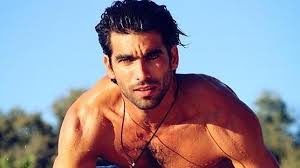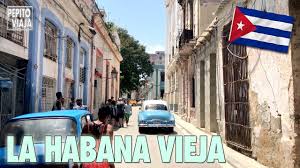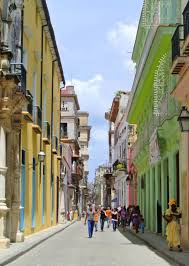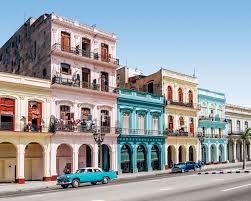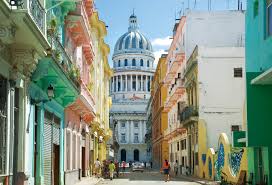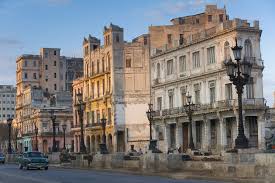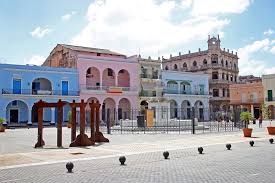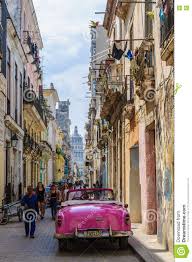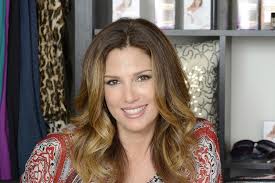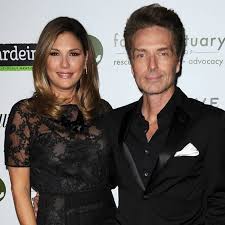 RUBÉN CORTADA RETURNS TO SPAIN FROM CUBA AFTER 3 YEARS, “I FELL INTO HELL”. VIDEOS.
RUBÉN CORTADA RETURNS TO SPAIN FROM CUBA AFTER 3 YEARS, “I FELL INTO HELL”. VIDEOS.
After three years in which we did not know anything about him, the Cuban actor and model Rubén Cortada (El Príncipe, Olmos and Robles), reappeared two months ago by surprise on his social networks, with a photograph on a beach in which he completely appeared naked and covering his private parts, next to the text: “I’m back. Treading ground.”
Rubén Cortada was born on the Isle of Youth, Cuba, on October 6, 1984. Raised in a humble family, he is the son of a hydraulic engineer and a microbiologist. Before becoming an actor, he dedicated part of his life to sports. He was a federated tennis player until he was 15 years old and also practiced boxing.
https://youtu.be/H_Hnvtwng1U
(Press ^ Here)
Ruben Cortada Story
He studied in Cuba for his baccalaureate at the IPVCE Vladimir Ilich Lenin. In 2003 he entered the José Antonio Echeverría Higher Polytechnic Institute (CUJAE) in Havana, to study Automatic Engineering, but left in the second year to dedicate himself to modeling.
He worked as a model for important firms such as Roberto Verino, Guess or Custo Barcelona, among others, and was the image of designer Jean-Paul Gaultier. In 2007 he was chosen as Male Model of the Year by the readers of ¡Hola! Magazine.
ARTISTIC CAREER
His first experiences as an actor were two plays in Cuba directed by Humberto Rodríguez. Later he trained in Interpretation with the Argentine Fernando Piernas as a mentor, before making the leap to series in Spain.
Rubén Cortada made his debut in Spain as an actor almost a decade ago, with small roles in the series ‘Bandolera’ and ‘El Tiempo entre costuras’ by Antena 3. But it was in 2014 when he became famous in the country as one of the protagonists of El Príncipe, the successful Telecinco series starring José Coronado, Álex González, and Hiba Abouk.
https://youtu.be/yS-b_k9M1r0
(Press ^ Here)
Ruben Cortada “El Tiempo entre Costuras”.
Rubén Cortada (36) was 30 years old when he monopolized the covers of the media as the attractive drug trafficker Faruq Ben Barek who dominated the dangerous neighborhood of Ceuta that gave the series its title.
His imposing physique and spectacular green eyes placed him in the rankings of most desired men and as one of the great promises of Spanish cinema and series. His popularity in El Príncipe led him to star in a movie (El Signo de Caronte) and other important fiction on TVE, the police Olmos y Robles with Pepe Viyuela.
Later, he returned to Telecinco to star in the TV movie What Hidden Their Eyes, with Blanca Suárez. Later he participated, also within Mediaset, the series Supermax (Cuatro), and the comedy Ella es tu padre. But since this last series stopped being broadcast, in October 2017, Rubén Cortada had completely disappeared from the media.
TODAY HE RETURNS TO SPAIN, AFTER LEAVING CUBA.
Three years in which we had not heard from him again. He stopped writing on Twitter and was also not active on Instagram (66,000 followers), where his last and only publication to date was from 2016.
On October 6, he turned 36 years old, but he did not respond to the congratulations that some media dedicated him on the network.
The gossip press had tried to keep track of him in recent years, despite him, since he was always shy and reserved with the media. The last photos of him are those that were published a year ago, in September 2019, spending the summer in Ibiza with his partner, the model Susana Pino, and their daughter, Mïa. Then Rubén Cortada wore long hair and a thicker beard, a different look from his fictional characters, just like in these previous photos from 2017
His followers congratulated him on his return while wondering where he had been all this time who in his day was one of the sexiest and most promising actors on television.
The actor now explains why he disappeared from the media. “I was in Cuba. I stopped working because I left for some personal issues and things got more and more complicated. It got out of hand and I couldn’t leave the country until almost three years later,” he tells Mad Men Magazine.
“It was a complicated situation. But I have returned with great force. I am back. With everything understood, located, well stored. Everything is well compartmentalized in my head. There were things that I managed badly. And everything is organized, after all this madness that happened to me in Cuba. I have everything very clear, “he says about the bad personal stage that he lived in his country of which he does not give more details.
“I went down to the ninth circle of hell. I went very low. Wrong. They are processes and everyone has them. Not that I am special because of this. And we are talking about this precisely because now I am fine. But our demons are all over the place. time lurking, or at least they are giving me all the time. In Cuba, it was going down to the ninth circle of hell. I greeted Dante: ‘Hello, how are you? Is everything okay? How are you doing here dear? ? ‘. We talked down there, it was a very interesting conversation, “he jokes about his fall into hell.
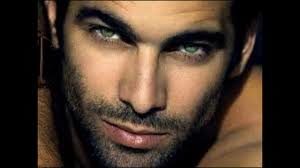 RUBÉN CORTADA REGRESA A ESPAÑA AL DEJAR CUBA, DESPUES DE 3 AÑOS, “CAÍ EN LOS INFIERNOS”. VIDEOS.
RUBÉN CORTADA REGRESA A ESPAÑA AL DEJAR CUBA, DESPUES DE 3 AÑOS, “CAÍ EN LOS INFIERNOS”. VIDEOS.
Después de tres años en los que no sabíamos nada de él, el actor y modelo Rubén Cortada (El Príncipe, Olmos y Robles), reapareció hace dos meses por sorpresa en sus redes sociales, con una fotografia en una playa en la que aparecía totalmente desnudo y tapándose sus partes íntimas, junto al texto: “I’m back. Pisando tierra”.
Rubén Cortada nació en la Isla de la Juventud, Cuba, el 6 de octubre de 1984. Criado en el seno de una familia humilde, es hijo de un ingeniero hidráulico y una microbióloga. Antes de ser actor, dedició parte de su vida al deporte. Fue jugador federado de tenis hasta los 15 años y también practicó boxeo.
Estudió en Cuba el bachillerato en el IPVCE Vladimir Ilich Lenin. En 2003 ingresa en el Instituto Superior Politécnico José Antonio Echeverría (CUJAE) de La Habana, para hacer la carrera de Ingeniería Automática, pero dejo en el segundo año para dedicarse al modelaje.
https://youtu.be/2sxjERPhqOo
(Presione ^ Aqui)
Ruben Cortada Historia
Trabajó como modelo para firmas importantes como Roberto Verino, Guess o Custo Barcelona, entre otros, y fue imagen del diseñador Jean-Paul Gaultier. En 2007 fue elegido como Modelo masculino del año por los lectores de la revista ¡Hola!.
Sus primeras experiencias como actor fueron dos obras de teatro en Cuba dirigidas por Humberto Rodríguez. Posteriormente se formó en Interpretación con el argentino Fernando Piernas como mentor, antes de dar el salto a las series en España.
Rubén Cortada debutó en España como actor hace casi una década, con pequeños papeles en las series ‘Bandolera’ y ‘El tiempo entre costuras’ de Antena 3. Pero fue en 2014 cuando se hizo famoso en el país como uno de los protagonistas de El Príncipe, la exitosa serie de Telecinco protagonizada por José Coronado, Álex González e Hiba Abouk.
Rubén Cortada (36) tenía 30 años cuando acaparaba las portadas de los medios como el atractivo narcotraficante Faruq Ben Barek que dominaba el peligroso barrio de Ceuta que daba título a la serie.
https://youtu.be/7xZQQS4_ToY
(Presione ^ Aqui)
Ruben Cortada Historia
Su físico imponente y espectaculares ojos verdes le situaban en los rankings de hombres más deseados y como una de las grandes promesas del cine y las series españolas. Su popularidad en El Príncipe le llevó a protagonizar alguna película (El signo de Caronte) y otra ficción importante en TVE, la policíaca Olmos y Robles junto a Pepe Viyuela.
Más tarde volvía a Telecinco para protagonizar la tv movie Lo que escondían sus ojos, con Blanca Suárez. Posteriormente participó, también dentro de Mediaset, la serie Supermax (Cuatro) y la comedia Ella es tu padre. Pero desde que dejó de emitirse esta última serie, en octubre de 2017, Rubén Cortada estaba totalmente desaparecido de los medios.
HOY REGRESA A ESPAÑA, DESPUES DE DEJAR CUBA.
Tres años en los que no habíamos vuelto a saber de él. Dejó de escribir en Twitter y tampoco se mostraba activo en Instagram (66.000 seguidores), donde su útima y única publicación hasta la fecha databa de 2016.
El pasado 6 de octubre cumplía 36 años, pero no respondió a las felicitaciones que algunos medios le dedicaron en la red.
La prensa del corazón sí había intentado seguirle la pista en estos últimos años, a su pesar, ya que siempre se mostró tímido y reservado con los medios. Las últimas fotos que había de él son las que se publicaron hace un año, en septiembre de 2019, veraneando en Ibiza con su pareja, la modelo Susana Pino, y la hija de ambos, Mïa. Entonces Rubén Cortada lucía el pelo largo y la barba más poblada, un look distinto al de sus personajes de ficción, al igual que en estas fotos anteriores de 2017
Sus seguidores le felicitaban por su regreso, al tiempo que se preguntaban dónde había estado todo este tiempo el que en su día fue uno de los actores más sexys y prometedores de la televisión.
El actor explica ahora el porqué de su desaparición mediática. “Estuve en Cuba. Paré de trabajar porque me fui por unos temas personales y cada vez se complicó más la cosa. Se me fue de las manos y no pude salir del país hasta casi pasados tres años”, cuenta a la revista Mad Men Magazine.
“Fue una situación complicada. Pero he regresado con mucha fuerza. I am back. Con todo entendido, localizado, bien almacenado. Todo está bien compartimentado en mi cabeza. Hubo cosas que gestioné mal. Y ya está todo organizado, después de toda esta locura que me pasó en Cuba. Lo tengo todo muy claro”, dice sobre la mala etapa personal que vivió en su país de la que no da más detalles.
“Bajé al noveno círculo del infierno. Me fui muy abajo. Mal. Son procesos y todo el mundo los tiene. No es que yo sea especial por esto. Y estamos hablando de esto justamente porque ahora estoy bien. Pero nuestros demonios están todo el tiempo acechando, o por lo menos a mí me están dando todo el tiempo. En Cuba fue bajar al noveno círculo del infierno. Saludé a Dante: ‘¿hola qué tal?, ¿todo bien?, ¿qué tal te va por aquí querido?’. Hablamos ahí abajo, fue una conversación muy interesante”, ironiza sobre su caída a los infiernos.
Agencies/ Wiki/ Nius/ Mireya Marron/ Extractos/ Excerpts/ Internet Photos/ YouTube/ Arnoldo Varona/ www.TheCubanHistory.com
THE CUBAN HISTORY, HOLLYWOOD.








